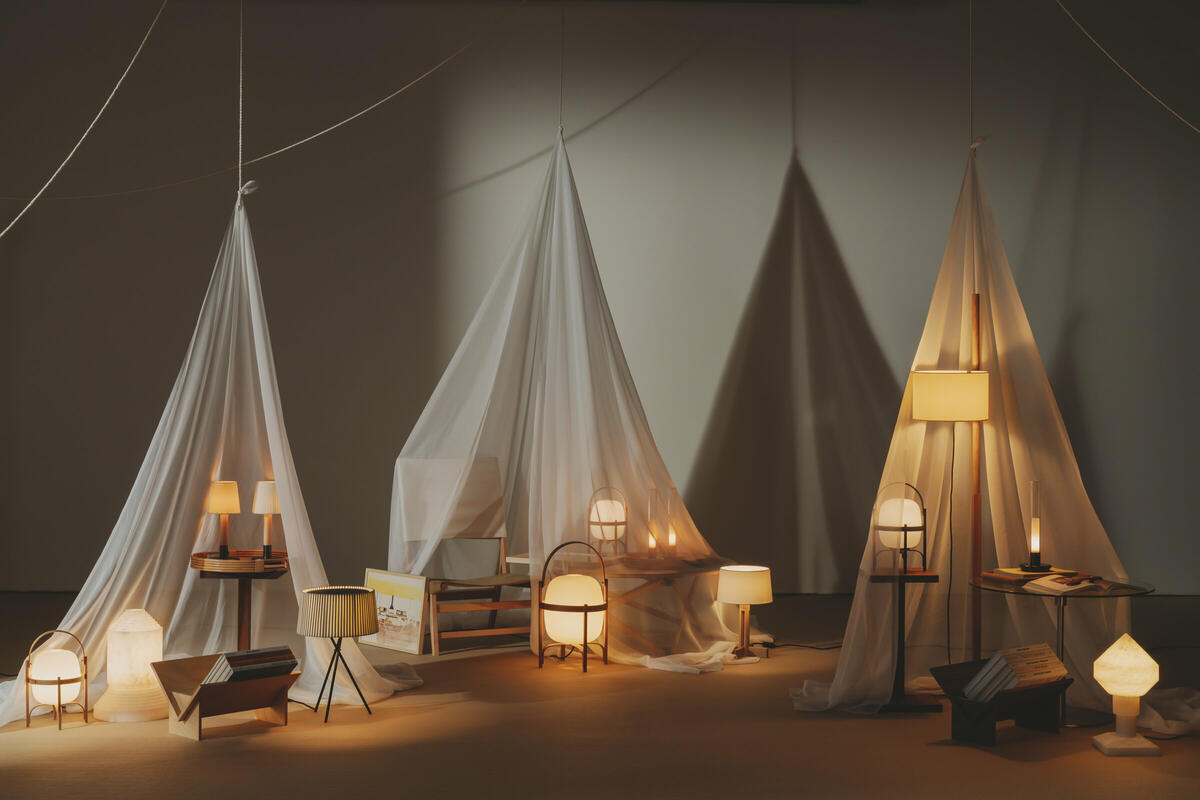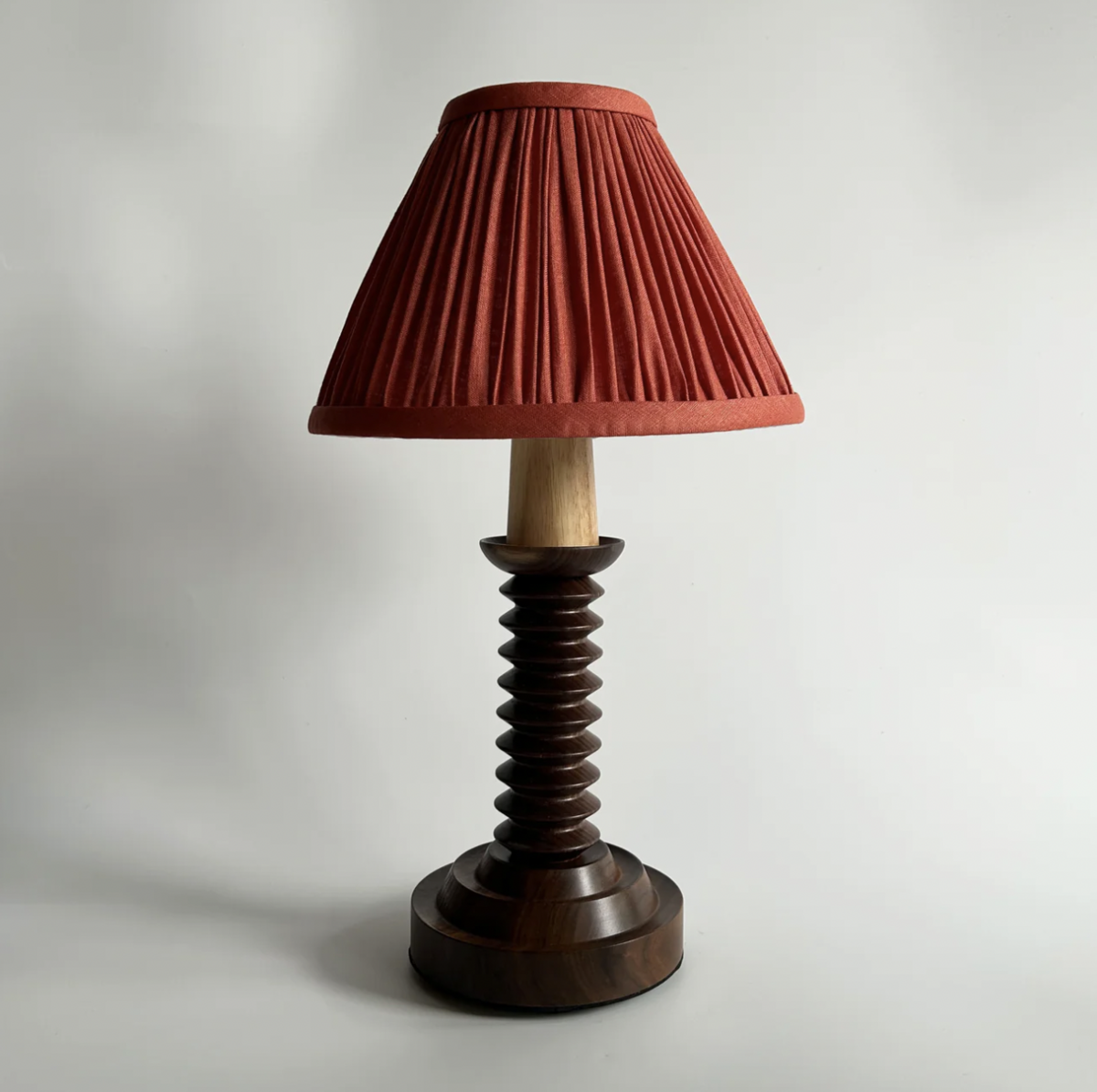P
ortable. Cordless. Rechargeable. Whatever you call them, battery-operated lamps are positively everywhere these days. From companies like British brand Pooky Lighting to Spain’s Santa & Cole and major American trade players like Visual Comfort & Co., the category is exploding across the globe. What was once a niche product largely seen in restaurants and hotels has become a sophisticated substitute for traditional corded lamps, giving designers the flexibility to place them wherever they please.
“They’re such an amazing tool, not just for design purposes but for hosting and flexibility and indoor-outdoor living—all these things we’ve been talking about for years now,” says Nashville-based designer Stephanie Sabbe, who sells a portable lamp of her own design at her store, Heirloom Artifacts. “It’s hard to believe they’re just now really coming onto the market in a meaningful way.”
The battery-powered tabletop light took off in restaurants a few years ago, when companies started rolling out affordable and tiny options, which turned out to be the perfect substitute for a flickering votive candle. The glow could last a whole evening, releasing waitstaff from switching out tea lights every few hours. The little lamps quickly became ubiquitous at restaurants, and as people have gotten used to seeing them out and about, the demand to have them at home has swelled.
Pooky founder Rohan Blacker sees the trend as a return to the way lighting was treated for much of history. “If you think back to 150 years ago, people lit their houses in a very different way than they do now,” he says. “You had candlesticks and oil lamps that you would carry with you or place anywhere that made sense. With the adoption of electricity, lighting was constricted to the edges of the room or overhead. When it comes to these rechargeable lamps, of course people love them, because they provide the opportunity to once again put lighting wherever you want it.” Pooky is going all in on rechargeables—Blacker estimates that, thanks to the company’s wide range of shade options, it has over 2,000 SKUs in the category at the moment, with more to come.
What Took So Long?
The technology behind portable lighting isn’t especially new. (Blacker points out that it’s the same basic principle that powers a flashlight.) What has changed in recent years is the quality of readily available lithium batteries—they’re now slim and lightweight enough to allow for a lamp to be easily moved. The ability to recharge them with a USB cable also simplifies things in a way that the need for a constant supply of AA batteries never could.
Battery life is another big component. “It has to be able to last an entire evening—ideally, two whole evenings,” says Blacker. “You don’t want to spend your life recharging these things.” Current models of rechargeable lamps can hold 12 hours or more of power between charges, depending on the bulb’s wattage. So, while the interest in cordless lighting has been around forever, developing battery technology has only recently made it practical.
Functionally, there are a few factors to consider when choosing between rechargeable or battery-operated lights. (As the market stands today, there are typically two kinds of portable lights: those with a USB port or those with a removable battery unit.) The ones with USB ports tend to be smaller lamps that might be placed on a table for a dinner party or occasionally used to light up a bookshelf. The lamps with their own battery unit are truly cordless and tend to be bigger and a little less portable. They’re meant more for an area with no easy access to an outlet, like a side table in the middle of a living room.
“The development of both of these product categories, rechargeable and cordless, have come directly from challenges that designers face,” says Sean Lavin, the chief design officer at Visual Comfort. “Particularly in a living room, we’ve heard from designers that sometimes they’ll have to cut a slit in a rug in order to access an outlet for a lamp. This is a great solution for them to put light where they need it and not have to worry about how to power it.”

Fairfax, Virginia–based DuVäl Reynolds is among the designers who’ve already begun using the lamps in their work, citing their versatility as a chief reason. “They’re great in a larger living room where there aren’t floor lamps,” he says. “You can put them on a side table and not worry about exposed wires or how you’re going to power it.” He adds that the lamps have been a big hit with families that have young children, as the lack of cords eliminates a baby-proofing concern. “It’s lighting without constraints.”
Until recently, when the batteries became more affordable, there were either high-end rechargeable lights or very cheap ones. Many brands were hesitant to enter the category until they could offer a product that was similar in price point to their traditional offerings, something that’s finally become attainable in the past two or three years. “There have been a lot of rechargeables out in the marketplace for years, but just like any other technology, it takes a while for some of those things to mature,” says Charles B. Neal, the executive vice president of Visual Comfort, which debuted its first rechargeable lamp last year. “You see trend-focused stuff coming to market that has a lot of problems, and it takes time to work those out.”
While the initial designs were pretty basic—petite and often powder-coated—as interest has grown, so has the category. Visual Comfort now offers nearly 20 rechargeable lamps, with materials as diverse as wicker and alabaster, and in more traditional sizes than those early models. Consequently, the price points are now similar to those of corded lights.
Rechargeable offerings have grown beyond the tabletop category as well, with products like floor lamps hitting the market; at Pooky, wireless sconces are in the works too. “I think we’re at the very beginning of the cordless revolution,” says Blacker. “I genuinely believe that this will change the way that people light their houses forever.”
There are some logistical challenges around the expanding category, particularly when it comes to shipping, as the lithium-ion batteries that power rechargeable lighting are considered a hazardous material under the Department of Transportation, requiring some additional labeling and shipping via freight instead of air. Still, most lighting manufacturers have been bowled over by the demand for the product. At Visual Comfort, Neal says the volume of inquiries that the cordless lamps received at High Point Market last fall astounded his team—and they planned their inventory accordingly. “We had a QR code on the product that designers could scan to receive more information, and the two cordless lamps we displayed were our two most scanned items in the showroom, with over 400 inquiries,” he explains. “This is definitely a case where the interior design community is leading us in a certain direction and showing us where we need to be growing.”

Designing possibilities
Sabbe was passionate enough about portable lamps that she decided to wade into the water of product development to start selling her own. “I was opening my retail store in Nashville, and I knew I wanted to sell a portable light,” she says. Unable to get a wholesale account with Italian brand Anna Lari, whose portable lamps she had been sourcing in her design work, Sabbe decided it was a good opportunity to create her own. “I’d seen a lot of metal and powder-coated options but not much using wood,” she says. The designer reached out to some overseas manufacturers with what she calls a Hail Mary proposal. Eight months later, she had a prototype of her Thompson Branch lamp, which features a hand-carved walnut base with an acacia stem and a pleated lampshade. “You can put them wherever you want—on a bookshelf or a desk or your kitchen table. I use them on our island, and I feel like I’m in a restaurant and not in a kitchen surrounded by kids,” she says.
David Martí Vilardosa, the design editor of Barcelona-based lighting brand Santa & Cole, says that the battery-operated technology has allowed the company to take its designs a step further, pushing them beyond simple function. “It allows us to achieve the true purpose for which these lamps were originally intended, [which is] to provide more or less intimacy as an activity unfolds,” he explains. “For instance, a dinner party may begin with the need to light up a seat at the table, but may end with a more relaxed atmosphere as you enjoy a few drinks. Similarly, a seaside picnic may start off with a more romantic setting, while the journey back calls for a brighter glow.”
As with so much of interior design, Sabbe believes that the affinity for this product comes down to the feeling that it evokes. “It’s functional, but it’s also just fun, and it’s warm,” says the designer. “Mind you, my kids are like, ‘I can’t see my Uno cards—the lights are too low,’ but I’m like, ‘Shhh, we’re creating a vibe.’”




























